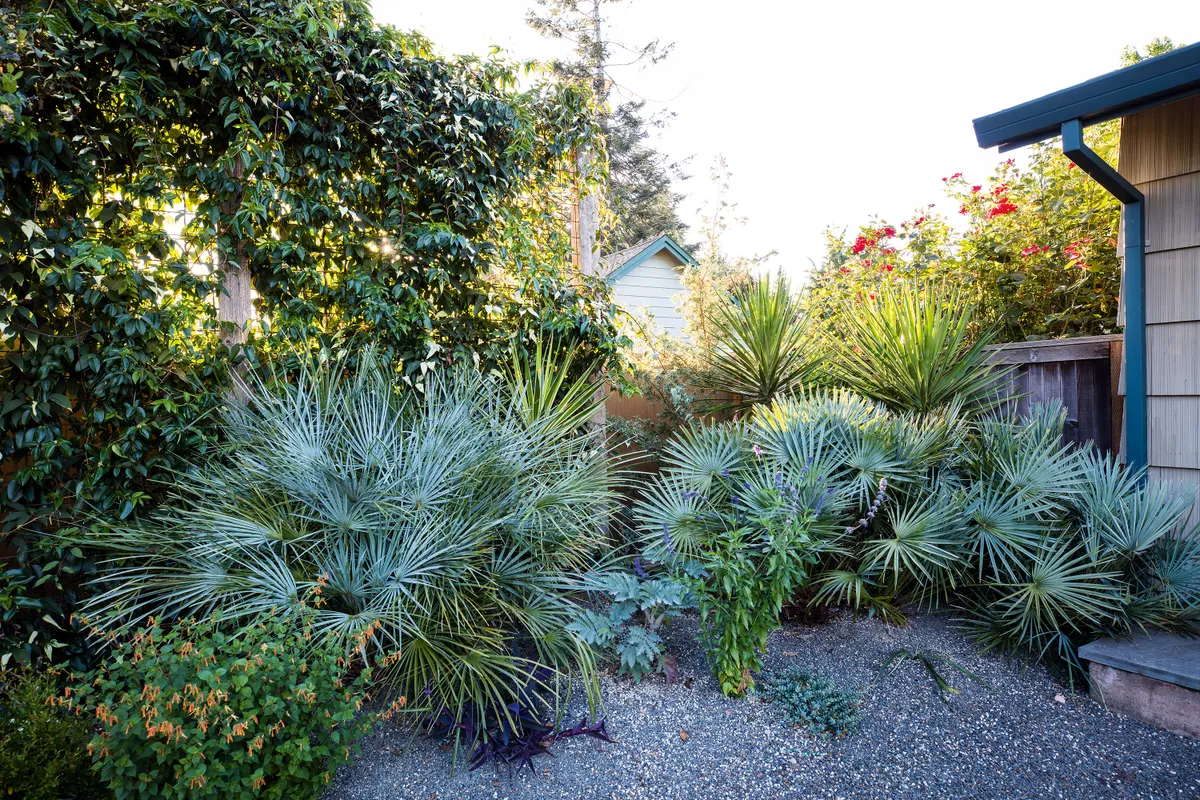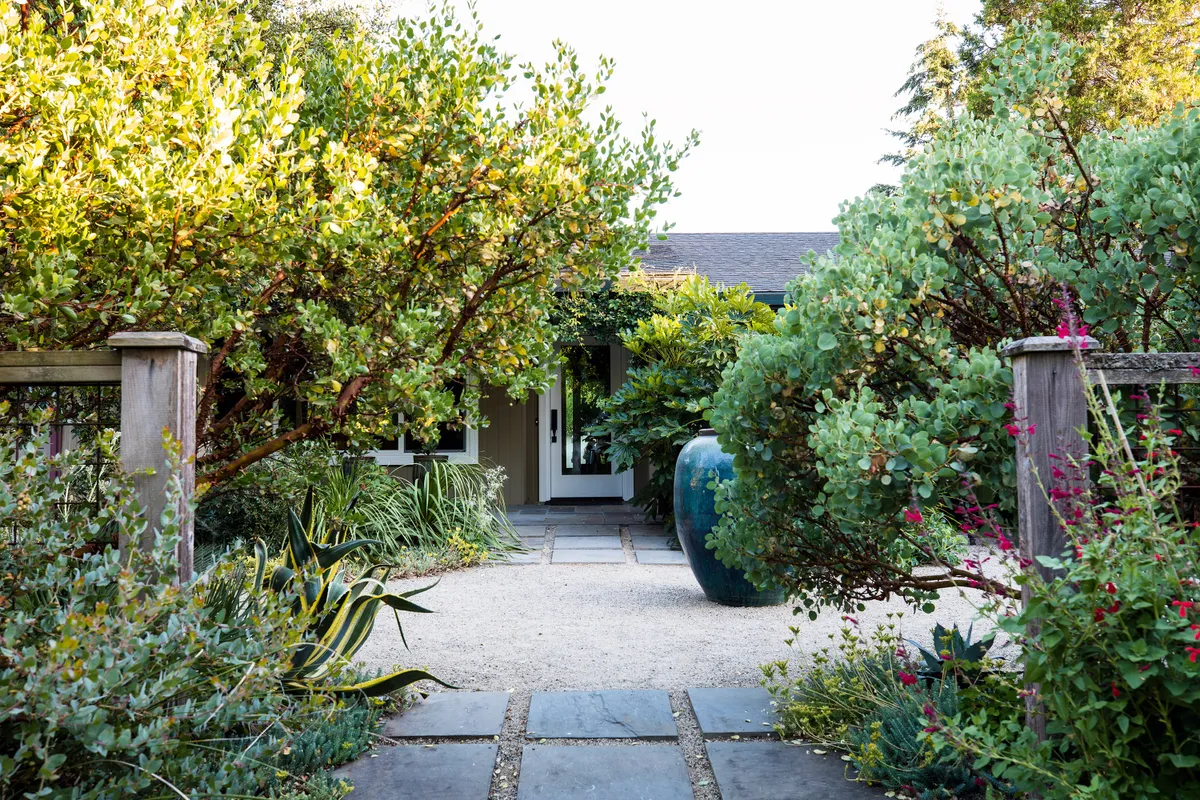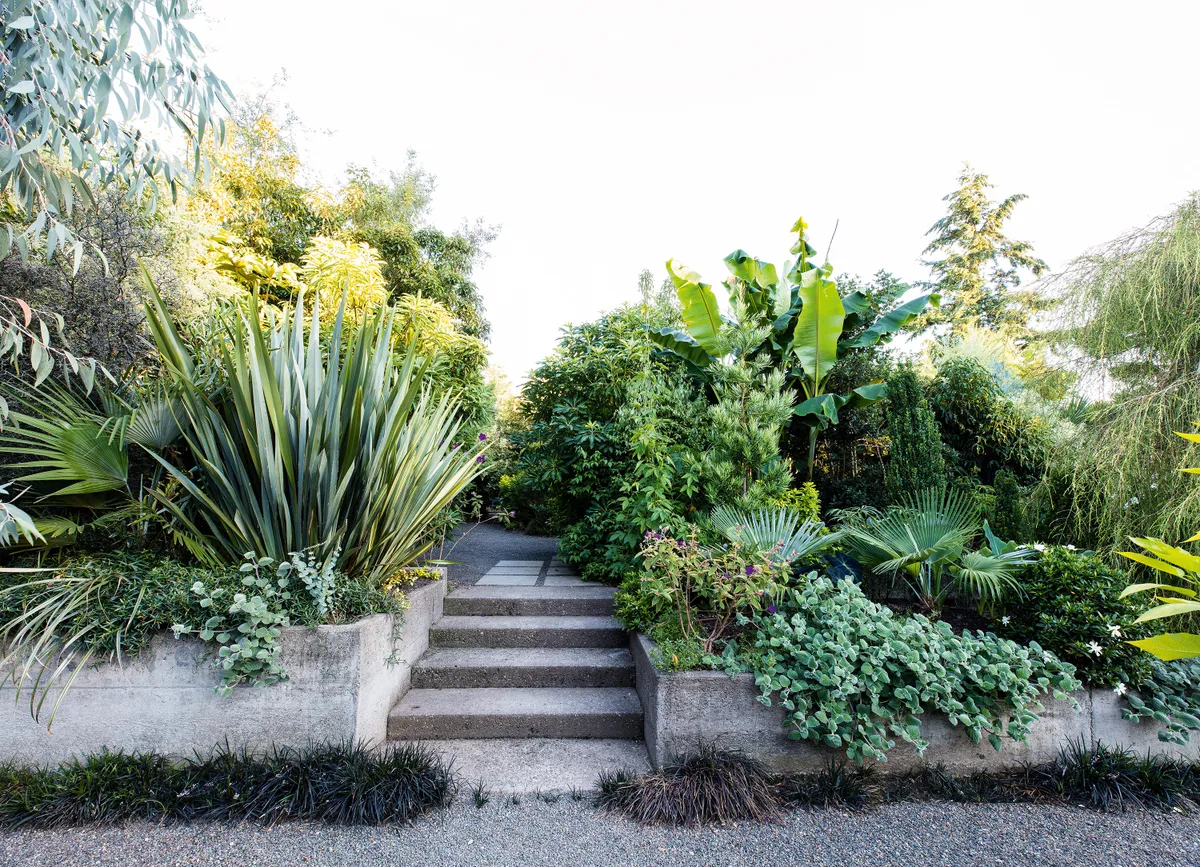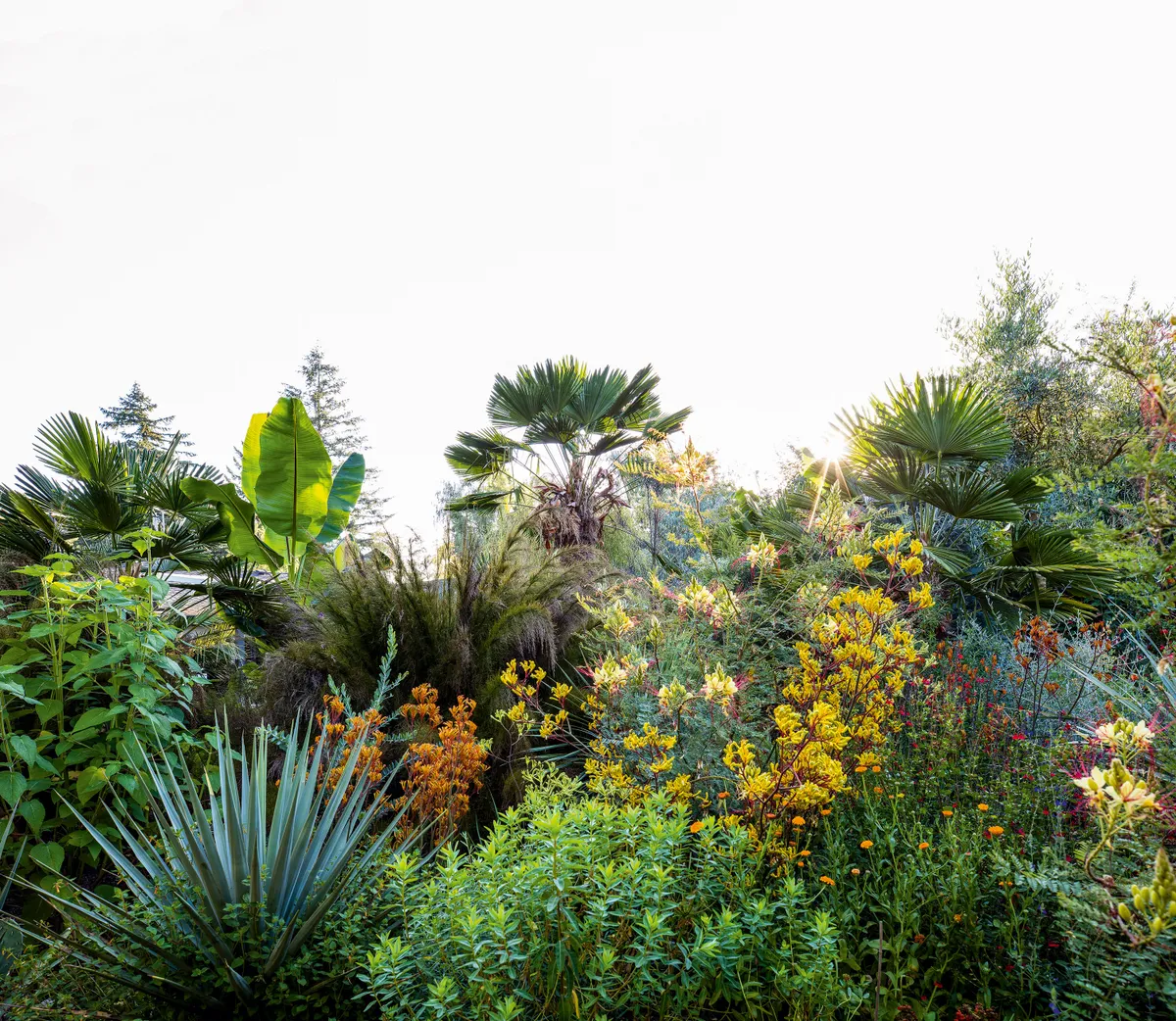Sean Hogan's private garden is in Portland, Oregon in the USA. It is five acres with loess soil, so fertile, but with some areas modified with organic matter or gravel. The climate is wet autumn to spring, dry summers and is at an altitude of 200m. Hardiness zone USDA 8b. Architectural plants form a repeating element in the garden while at the rear of the house the emphasis is on plants, such as phlomis, grasses, kangeroo paws and caesalpinias, which look good when backlit by the low evening sun. "I am cautious about mixing things that are overtly tropical with things that are not," says Sean. Find out more about his planting below.

A tall, green Vietnamese urn provides a clear focal point, surrounded by a selection of evergreen trees including the slow-growing cork, Quercus suber and a dwarf form of a Californian native Umbellularia californica ‘O’Brien’, on the left and the architectural plant Nolina hibernica on the right.

In the Crevice Garden Sean used vertically positioned stones and a gritty soil to allow for maximum drainage. Rosettes of Nolina nelsonii and Agave ovatifolia are among the architectural plants that form a repeating element in the garden. In the foreground the orange-flowered horned poppy Glaucium flavum f. fulvum adds colour.

Spiky rosettes of the dwarf palm Chamaerops humilis var. argentea add interest to a shady corner next to the house. To the left, a metal screen covered with various climbers,including the kiwi fruit relative Actinidia tetramera var. maloides, acts as a space divider.

In planting along the front of the house the rosette Agave ovatifolia ‘Frosty Blue’ forms a stunning centrepiece. To its left is the South African silver tree Leucadendron argenteum and on its right Chamaerops humilis var. argentea and the Chilean wine palm Jubaea chilensis.

Sean has framed the entrance to the house with two small trees native to this area: Arctostaphylos manzanita on the left and the blue-green A. viscida on the right. Two red salvias – S. ‘Vermillion Bluffs’ and S. darcyi x microphylla ‘Windwalker’ – help to attract hummingbirds.

Beds on either side of these steps are filled with a structural mix of foliage plants, most notably the Phormium tenax ‘Striatum’ on the left and the silver foliage of Plectranthus ‘Trailing Silver’ on the right.

At the front of the house Sean has used a mix of Mediterranean planting, such as the self-seeding Verbena rigida, the pink Rosa x odorata ‘Mutabilis’, Salvia ‘Royal Bumble’ and the orange-flowered pomegranate Punica granatum, which are tolerant of dry conditions. The silver-blue conifer Abies koreana ‘Silberlocke’ and palm Trachycarpus wagnerianus add some tropical structure.

Marking a change of level in the rear garden, this bed is dominated by the white bark and silver-blue foliage of an Eucalyptus pauciflora subsp. niphophila, while the broad leaves of Phormium tenax ‘Striatum’ stand out to the right. The dark-leaved climber Trachelospermum asiaticum ‘Theta’ helps to soften the top of the retaining wall, and the black mondo grass, Ophiopogon planiscapus ‘Kokuryu’, adds contrast at the base.

At the rear of the house, the tall palm Trachycarpus wagnerianus and banana plant Musa sikkimensis provide a striking backdrop for a diverse range of plants that includes several cultivars of Anigozanthos flavidus, the yellow and orange flowerheads of which merge with the distinctive pale-yellow flowers of Erythrostemon gilliesii in the centre. Behind this the restio, Rhodocoma capensis, which has become a firm favourite of John’s, stretches its raggedy, dark-green stems towards contrasting blue-green spikes of Yucca schottii in the foreground.